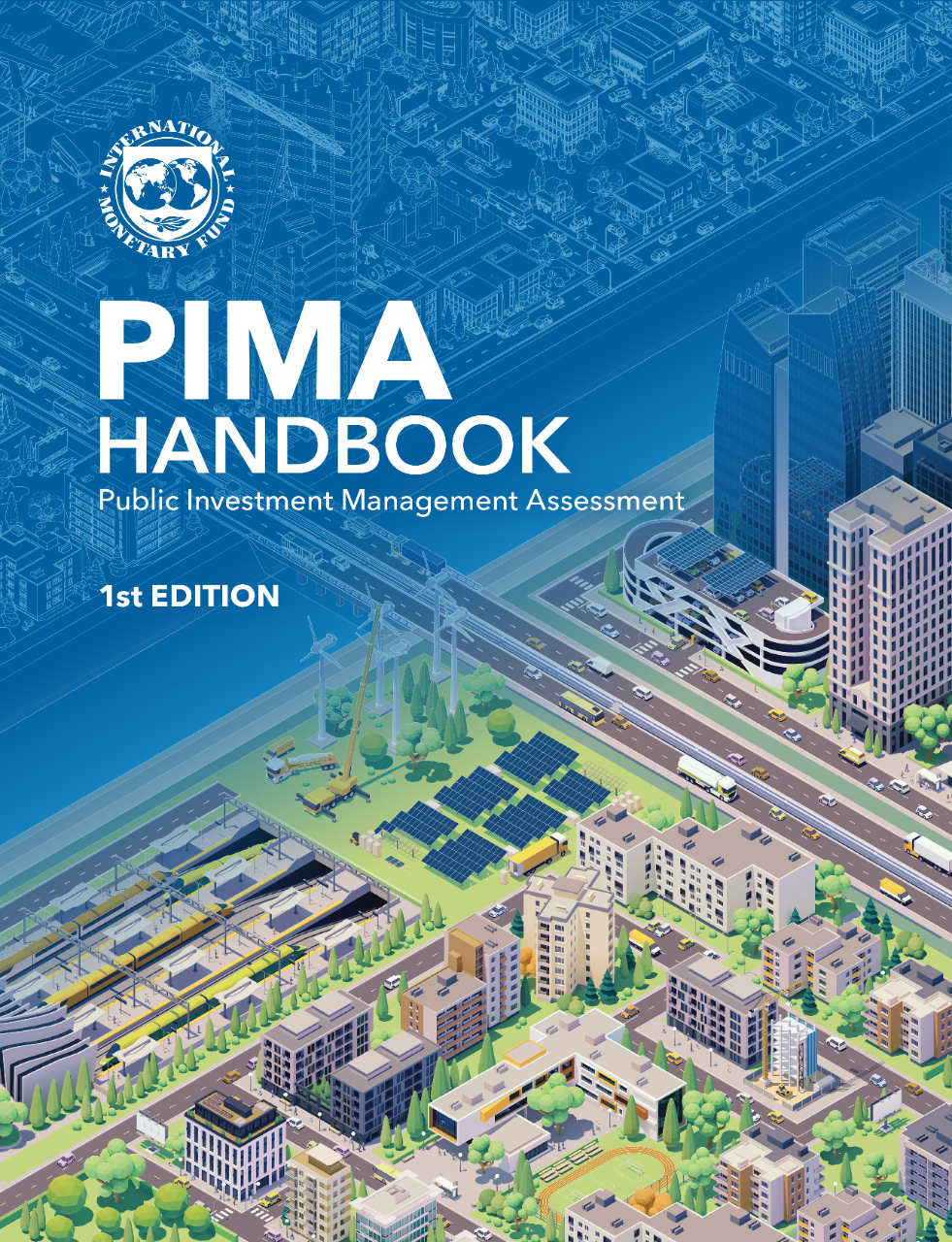
PART 2. PIMA Practitioners’ Guide
4 Assessing PIMA Institutions: General Issues
How Are Institutional Design and Effectiveness Assessed in Practice?
What Data and Data Sources Are Typically Available?
How Are Externally Financed Projects Assessed?
How Do We Define Major Projects?
How Do We Apply the Indicative Scoring Thresholds?
What is the Scope of the PIMA?
5 Planning Sustainable Levels of Public Investment
Institution 1: Fiscal Targets and Rules
Institution 2: National and Sectoral Planning
Institution 3: Coordination between Entities
Institution 4: Project Appraisal
Institution 5: Alternative Infrastructure Financing
6 Allocating Investments to the Right Sectors and Projects
Institution 6: Multiyear Budgeting
Institution 7: Budget Comprehensiveness and Unity
Institution 8: Budgeting for Investment
Institution 9: Maintenance Funding
Institution 10: Project Selection
7 Delivering Productive and Durable Public Assets
Institution 12: Availability of Funding
Institution 13: Portfolio Management and Oversight
Institution 14: Management of Project Implementation
This handbook is aimed at anyone who is involved in a Public Investment Management Assessment (PIMA) or who has a practical interest in public investment management. It is intended to be useful for country authorities, IMF staff, staff of other financial institutions and development organizations, and anyone who is interested in exploring different aspects of public investment management to understand how country systems are designed and how they work in practice.
Part I (sections 1 through 3) of the handbook gives a concise overview of the PIMA framework. Section I explains the importance of public investment and describes the PIMA framework. Public infrastructure is a key driver of inclusive economic growth and development, and the reduction of inequalities. The need for stronger infrastructure governance for quality investment is widely recognized. Yet, creating quality infrastructure has often been challenging. Losses and waste in public investment are often systemic.
PIMA is a comprehensive and standardized framework to assess public investment management for countries at all levels of economic development. PIMAs evaluate 15 institutions, or practices, involved in the three key stages of the public investment cycle: planning, allocation, and implementation. Each institution is analyzed along three dimensions that reflect the key features of the given institution, resulting in a total of 45 dimensions. A key feature of the PIMA is that it makes a clear distinction between institutional design (what is on paper) and effectiveness (what is in practice).
Section 2 discusses how to describe and analyze public investment trends and efficiency. It describes the datasets that are used and gives examples of how these are presented. It also outlines the methodology for analyzing the public investment efficiency and presenting efficiency gaps.
Section 3 of the handbook gives an overview of usefulness of the framework to identify key bottlenecks in public investment management and develop an action plan for reform. It describes the key issues and challenges identified in PIMAs and the main recommendations that have been made to improve public investment management, then gives examples of action plans proposed in previous PIMAs.
Part II provides a detailed practitioners’ guide to apply the PIMA framework. A detailed description, explanation, and discussion of each of the 15 PIMA institutions and 45 dimensions are included in sections 4 through 8. Section 4 discusses key general issues that are common for many of the institutions and dimensions. Sections 5 through 7 provide detailed discussions of the institutions and dimensions under each of the three main pillars: planning, allocation, and implementation. Section 8 discusses how to analyze and assess the cross-cutting enabling factors.
The appendixes provide additional guidance on the PIMA framework. Appendix I contains the questionnaire that guides the PIMA assessments. Appendix II summarizes indicative scoring thresholds for institutional design and effectiveness for each of the 45 PIMA dimensions. Appendix III provides an overview of the PIMA assessment process. Appendix IV outlines a PIMA report, and Appendix V comprises a glossary of commonly used terms.
THE PIMA FRAMEWORK
(Click on the interactive chart to explore)
Loading...
1.
Fiscal Targets and Rules:
1.a. Is there a target or limit for government to ensure debt sustainability?
1.b. Is fiscal policy guided by one or more permanent fiscal rules?
1.c. Is there a medium-term fiscal framework (MTFF) to align budget preparation with fiscal policy?
2.
National and Sectoral Planning:
2.a. Does the government prepare national and sectoral strategies for public investment?
2.b. Are the government’s national and sectoral strategies or plans for public investment costed?
2.c. Do sector strategies include measurable targets for the outputs and outcomes of investment projects?
3.
Coordinating Between Entities:
3.a. Is capital spending by SNGs, coordinated with the central government?
3.b. Does the central government have a transparent, rule-based system for making capital transfers to SNGs, and for providing timely information on such transfers?
3.c. Are contingent liabilities arising from capital projects of SNGs, PCs, and PPPs reported to the central government?
4.
Project Appraisal:
4.a. Are major capital projects subject to rigorous technical, economic, and financial analysis?
4.b. Is there a standard methodology and central support for the appraisal of projects?
4.c. Are risks taken into account in conducting project appraisals?
5.
Alternative Infrastructure Financing:
5.a. Does the regulatory framework support competition in contestable markets for economic infrastructure (e.g., power, water, telecoms, and transport)?
5.b. Has the government published a strategy/policy for PPPs, and a legal/regulatory framework which guides the preparation, selection, and management of PPP projects?
5.c. Does the government oversee the investment plans of public corporations (PCs) and monitor their financial performance?
6.
Multiyear Budgeting:
6.a. Is capital spending by ministry or sector forecasted over a multiyear horizon?
6.b. Are there multiyear ceilings on capital expenditure by ministry, sector, or program?
6.c. Are projections of the total construction cost of major capital projects published?
7.
Budget Comprehensiveness and Unity:
7.a. Is capital spending mostly undertaken through the budget?
7.b. Are all capital projects, regardless of financing source, shown in the budget documentation?
7.c. Are capital and recurrent budgets prepared and presented together in the budget?
8.
Budgeting for Investment:
8.a. Are total project outlays appropriated by the legislature at the time of a project’s commencement?
8.b. Are in-year transfers of appropriations (virement) from capital to current spending prevented?
8.c. Is the completion of ongoing projects given priority over starting new projects?
9.
Maintenance and Funding:
9.a. Is there a standard methodology for estimating routine maintenance needs and budget funding?
9.b. Is there a standard methodology for determining major improvements (e.g. renovations, reconstructions, enlargements) to existing assets, and are they included in national and sectoral investment plans?
9.c. Can expenditures relating to routine maintenance and major improvements be identified in the budget?
10.
Project Selection:
10.a. Does the government undertake a central review of major project appraisals before decisions are taken to include projects in the budget?
10.b. Does the government publish and adhere to standard criteria, and stipulate a required process for project selection?
10.c. Does the government maintain a pipeline of appraised investment projects for inclusion in the annual budget?
11.
Procurement:
11.a. Is the procurement process for major capital projects open and transparent?
11.b. Is there a system in place to ensure that procurement is monitored adequately?
11.c. Are procurement complaints review process conducted in a fair and timely manner?
12.
Availability of Funding:
12.a. Are ministries/agencies able to plan and commit expenditure on capital projects in advance on the basis of reliable cash-flow forecasts?
12.b. Is cash for project outlays released in a timely manner?
12.c. Is external (donor) funding of capital projects fully integrated into the main government bank account structure?
13.
Portfolio Management and Oversight:
13.a. Are major capital projects subject to monitoring during project implementation?
13.b. Can funds be re-allocated between investment projects during implementation?
13.c. Does the government adjust project implementation policies and procedures by systematically conducting ex post reviews of projects that have completed their construction phase?
14.
Management Project Implementation:
14.a. Do ministries/agencies have effective project management arrangements in place?
14.b. Has the government issued rules, procedures and guidelines for project adjustments that are applied systematically across all major projects?
14.c. Are ex post audits of capital projects routinely undertaken?
15.
Monitoring of Public Assets:
15.a. Are asset registers updated by surveys of the stocks, values, and conditions of public assets regularly?
15.b. Are nonfinancial asset values recorded in the government financial accounts?
15.c. Is the depreciation of fixed assets captured in the government’s operating statements?
 |
Cross-Cutting Institutions Legal Framework, IT System, Staff Capacity |
 |

